INDIAN ARMED FORCES CHIEFS ON
OUR RELENTLESS AND FOCUSED PUBLISHING EFFORTS

SP Guide Publications puts forth a well compiled articulation of issues, pursuits and accomplishments of the Indian Army, over the years

I am confident that SP Guide Publications would continue to inform, inspire and influence.

My compliments to SP Guide Publications for informative and credible reportage on contemporary aerospace issues over the past six decades.
- Interim Defence Budget 2024-25 — An Analysis
- Union Defence budget 2024
- Indian Army: In quest of greater firepower and policy recommendations for gaps
- Indian Army Annual Press Conference 2024
- 6G will transform military-industrial applications
- Tata Boeing Aerospace Delivers 250 AH-64 Apache Fuselages, Manufactured in India
Hunt on for Assault
Provision of a new generation assault rifles for the 382 infantry battalions had been termed "Priority I" project to address the festering neglect of the infantry and the void of a state-of-the-art assault rifle.
 |
By Lt. General P.C. Katoch (Retd) Former Director General of Information Systems, Indian Army |
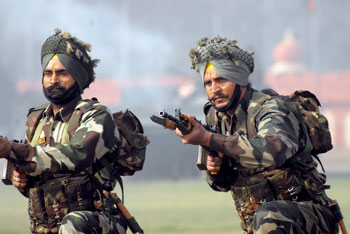
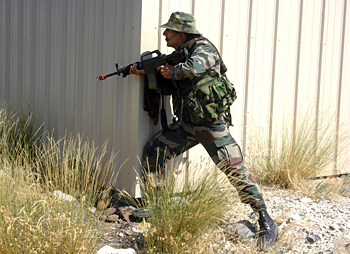
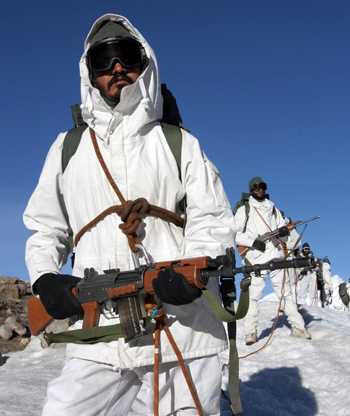
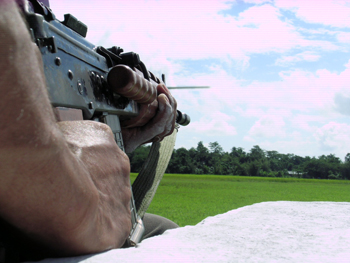
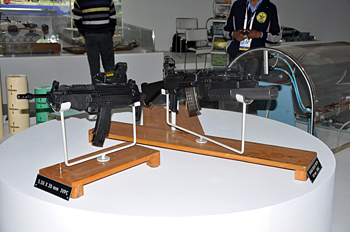
For the foot soldier, the most important object is his personal weapon. In this context, the quest of the Indian Army for a state-of-the-art assault rifle has been long and continuing. The media has recently reported that a four year hunt for a new generation assault rifle may get extended as the global tender floated in 2011 for new generation assault rifles with interchangeable barrels for conventional warfare and counter-insurgency operations is likely to be scrapped. Though the cancellation is not confirmed, other options are being looked at.
The quest of the Indian Army for a state-of-the-art assault rifle has been long and continuing.
Provision of new generation assault rifles for the 382 infantry battalions had been termed "Priority I" project to address the festering neglect of the infantry and the void of a state-of-the-art assault rifle. Foreign firms like Colt (US), Beretta (Italy), Sig Sauer (Europe), Ceska (Czech) and Israel Weapon Industries (IWI) had participated in the trials for the double-barrel rifles; 5.56x45mm primary barrel for conventional warfare and 7.62x39mm secondary barrel for counter-terror operations. At the time of floating the tender in 2011, much was said about why an assault rifle with interchangeable barrels was being sought but this obviously was a conscience decision taken by the Army, which had approval of the Ministry of Defence.
The plan was to go for direct acquisition of 65,000 of these new generation assault rifles at an estimated cost of around 4,850 crore, to equip the 120 infantry battalions deployed on the western and eastern fronts. The Ordnance Factory Board (OFB) was to then subsequently manufacture over 1,13,000 such rifles after getting transfer of technology (ToT) from the foreign vendor or go for joint venture (JV). The new generation rifle was to weigh around 3.5 kgs with advanced night-vision, holographic reflex sights, laser designators, detachable under-barrel grenade launchers and the like.
The plan was to go for direct acquisition of 65,000 of these new generation assault rifles at an estimated cost of around 4,850 crore.
The foot soldier generally is forgotten in the race of big-ticket weapon systems; fighter aircraft, helicopters, ships, tanks, missiles, artillery and the like. If the direct procurement of 65,000 new generation assault rifles is being scrapped, it is not the first time that the infantry will be suffering such setback. In 1980, 17 x 5.56mm assault rifles from 11 countries were imported by the MoD, aim being to equip 3 x parachute commando battalions and 3 x parachute battalions (latter part of the Parachute Brigade), funds for which had been reserved in the Sixth Army Plan. The Army completed comprehensive trials in 1980 in accordance with the trial directive issued by Army Headquarters. However, the case went into cold storage. It emerged that an anonymous letter was received by the then Defence Minister alleging US$ 10,000 had been paid to place a particular rifle at the top. Then, in 1985, the MoD floated a query as to why the AK-74 assault rifles had not been tried out. The Army replied that these 17 weapons were imported by MoD without reference to the Army and the AK-74 in any case was of 5.45mm bore whereas the entire Indian Army was planning to be switch to 5.56mm assault rifles. In this war of red tape, the Sixth Army Plan lapsed and so did the funds for the six battalions that were to be equipped.
While the procurement of the new generation rifle is uncertain, the makers of the Kalashnikov have recently announced that they would be setting up an AK 47 factory in India this year in conjunction an India company , and that they plan to produce 50,000 assault rifles per year.
So, seven years after the trials of these imported rifles were completed in 1980, the parachute commando and parachute units went to Sri Lanka under the IPKF carrying the unwieldy 7.62 SLR rifles to battle the LTTE armed with AK 47 assault rifles. It is later that the Indian Army would import one lakh AK 47 rifles (then costing only US$ 300 apiece) and give some 100 per infantry battalion in the IPKF. Meanwhile the abovementioned 17 x 5.56mm imported rifles were handed over to the DRDO-OFB to develop an indigenous version, and after 15 excruciating years emerged the 5.56 INSAS which was nowhere close to the top 10 assault rifles of the same category available globally. Frankly, the DRDO-OFB should have gone in for an AK 47 with a matching night sight, which with double strapped filled magazines gives enough firepower to the soldier.
Even today, soldiers guarding the frontline on Siachen Glacier keep a loaded AK 47 next to the personal issue INSAS because there is no guarantee that the latter would not jam at the critical fleeting moment. Since we failed to indigenously produce a state-of-the-art assault rifle and other small arms, even the PMF, CAPF (BSF, CRPF, ITBP), SPG and even special units like Force 1 and Greyhounds resorted to imports. The Army Special Forces and parachute units imported 5.56mm Tavor assault rifles and similarly the MARCOS and Garud too went in for imported small arms.
While the procurement of the new generation rifle is uncertain, the makers of the Kalashnikov have recently announced that they would be setting up an AK 47 factory in India this year in conjunction an India company (name withheld), and that they plan to produce 50,000 assault rifles per year. What the hierarchy needs to acknowledge is that in this age of sub-conventional and irregular warfare, the foot soldier must not be neglected. It has been said past several years that for the price of a mere squadron of tanks, the entire infantry can be armed to the teeth. Considering the present and future asymmetric threat, it is not only the infantry but all foot soldiers, especially of the Security Sector, that need to be equipped with state-of-the-art assault rifles with night fighting capability.





